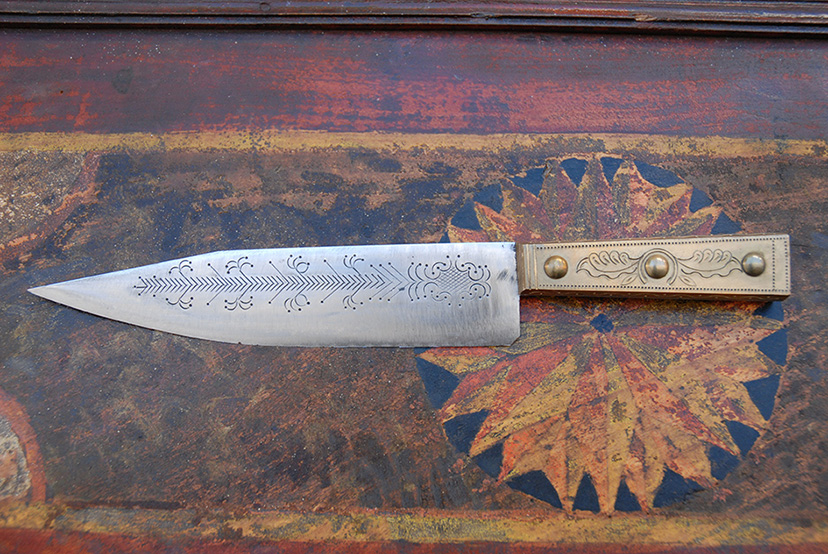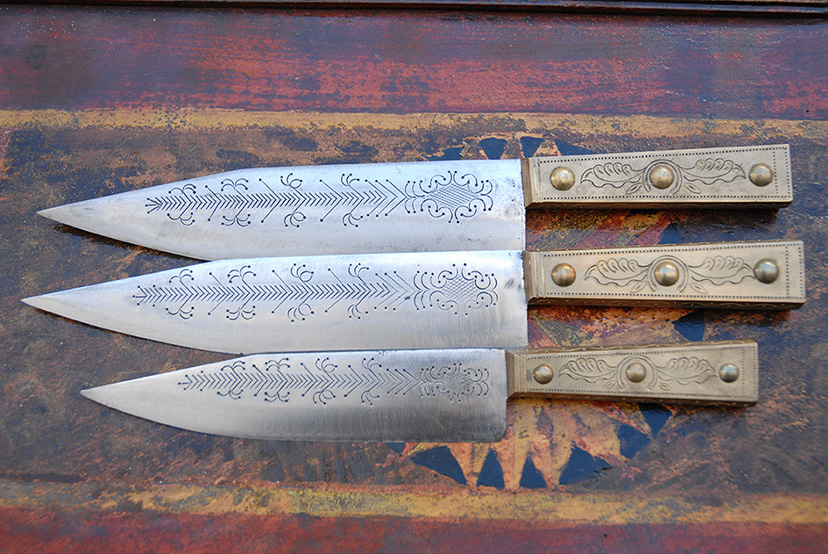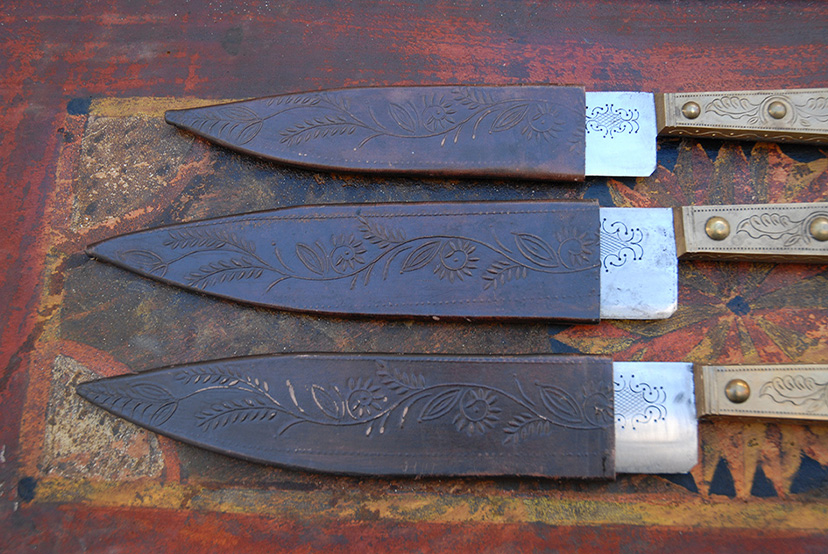More than just a simple tool or utensil for performing daily domestic or agricultural tasks in Ibiza, knives, the ‘cutxilles pageses’, more than many other objects, bear witness to the island’s rural past, as unique pieces that have been handed down from parents to children and used not only as a kitchen tool, but equally as a challenging weapon with which to face rivals in affairs of the heart.
The ‘cutxilles pageses’ are unique objects, items on which fire has engraved tradition and history, and which are now valued as little works of art, which are unique and treasured by collectors. In a society based on a subsistence economy where in former times, scarcity and scant resources were the general way of life in Ibiza, the detailed work and the wealth of skill is striking in these old Ibizan knives.
Manufacture of these artefacts began with the shaping and forging of the steel blade. The material used was salvaged from old, worn out files or the leaf springs of lorries no longer in use. Having been heated on blazing coals, when the steel cooled, the blade was refined to even out its surface and decorated using a hammer or a punch. Like the ancient musical instruments of the island, the designs decorating the knives were usually representations of plants or flowers. The knife was not complete until it had been inserted in the handle, normally made from cherry wood, although metal, bone and even a combination of these materials were often used.
Each piece was carefully kept in a sheath of ox skin leather which was often decorated as well, usually with the same motifs as the knife, creating another little work of art in itself. The manufacturing process of a good knife ended with its ‘trempat’ or tempering, when the sharp steel blade was submerged in olive oil to improve its cutting ability. The ‘cutxilles’ were usually made in four different sizes, depending on their purpose, with the biggest ones used for the pig slaughter and the smaller ones for the kitchen or for use in the fields.
In the old days, fathers usually gifted their sons a knife when they reached the age of fourteen, as it was considered that when you had your own knife you were no longer a child but had made the transition to adulthood.
Apart from its obvious use in the kitchen and in the fields, the knife was also used for the annual pig slaughtering, and in the old days, these country knives were also used as weapons usually concealed in belts, or down the leg, or to escape scrutiny from the Guardia Civil, the knife would often be passed to the young girls to hide beneath their shawls.
For many years knives were witness to and instrumental in the most belligerent stories of fights and brawls between boys of different villages or rivals in the traditional courtship rituals or ‘festeig’ of young girls in the area.


